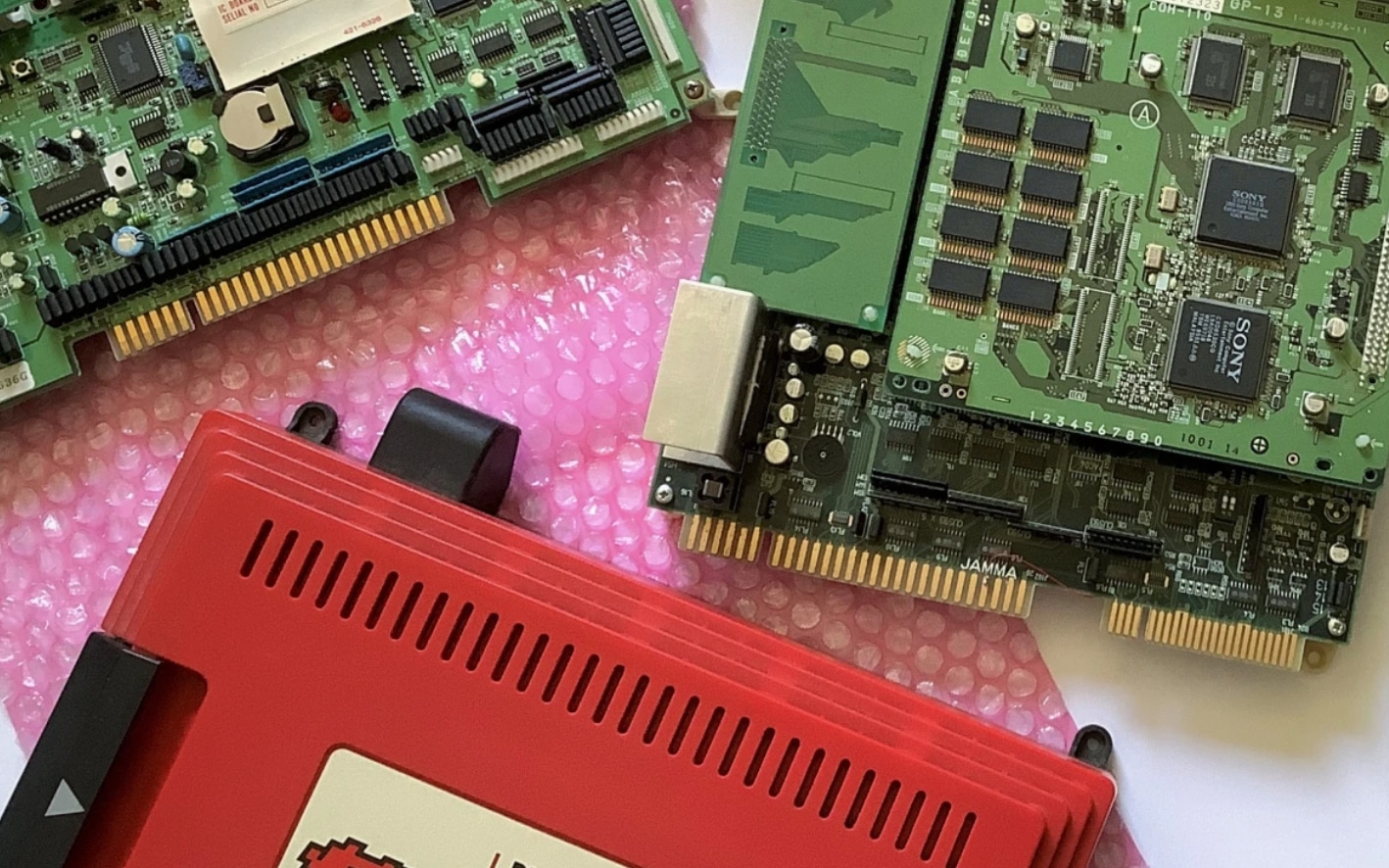
What is an Arcade PCB board?
Arcade PCB
Arcade PCB Boards are customized printed circuit boards used in arcade devices to hold the game program and manage the electronic components of the games. The central unit handles all player inputs, produces audiovisual results, and controls the entire gaming interface. Customized hardware arrangements are included in an arcade PCB, which is made for individual games.
Arcade PCB began as specialized panels for single games and has evolved into multi-game setups that can run numerous games simultaneously. These circuit boards are essential to delivering the exciting and dynamic playing experience that arcade machines are known for.
How an Arcade PCB is Made
- Designing Stage: The first step in creating an arcade PCB is the process of designing. An illustration that lists all of the electrical links and parts required for the particular arcade game must be made by a collaboration between hardware and game designers during this phase. The arcade PCB board may be designed using the circuit diagram as a guide.
- PCB Layout Schematic: The next phase for arcade PCB creation is designing the layout. The physical configuration of the board’s elements, as well as the metal connections that link them, have to be defined by this layout. To fully optimize the arrangement of components for dependability and effectiveness, sophisticated circuit board designing software must be used
- Creating prototypes: A sample arcade PCB is then constructed before bulk production. With the help of this model, experts can evaluate the board’s operation and spot issues that might arise. It is put through a thorough evaluation procedure to ensure it can fulfill the arcade game’s performance goals.
- Manufacturing: After the working model is deemed acceptable, the manufacturing procedure starts. Usually, sheets of copper are layered over an underlay substance, like fiberglass, to create the arcade PCB. Surplus copper is etched off to achieve the appropriate circuit layout during manufacture.
- Installing Components: The element installation phase is the next step for completing the arcade PCB. Several electrical parts, including connectors, memory cards, and processing units, must be affixed to the arcade PCB board at the appropriate places to do this. During this stage, accuracy is essential to guarantee correct operation.
- Soldering: The electrical parts are attached to the arcade PCB boards via soldering during the next phase. To do this, a type of metal alloy known as solder must be melted to join the element permanently, leading to copper tracing upon the circuit board. According to the manufacturing scale’s size, human or automated soldering procedures might be used.
- Examination: The arcade PCB board has to be thoroughly tested following component placement and soldering. The most common tests included in this are tests for functionality to guarantee that all parts perform as planned and that all links are made correctly. Before the finished product is put together, testing aids in finding and fixing any flaws or problems.
- Complete Assembling: Next, the arcade PCB board manufacturer sends the circuit board to be prepared for its final assemblage. To accomplish this, the arcade PCB must be integrated within the device and connected to the controllers, display, and additional hardware elements. Further testing is done on the entire arcade system to ensure everything works well.
- Quality Assurance: To ensure uniformity and dependability, quality control procedures are followed throughout the manufacturing cycle. This covers functional assessments, electrical evaluation, and visual examinations at different manufacturing phases. Once the manufacturing is completed, a final quality assurance for the overall health of the arcade PCB boards may be conducted.
Precautions to Observe During Manufacturing
- Static Electricity Management: Delicate electrical elements are susceptible to harm by static electricity. To avoid generating electrostatic discharge while managing the arcade PCB, safeguards include putting static-resistant countermeasures in place in the industrial environment, including static-resistant mats, wrist bands, and clothes.
- Cleanroom Settings: Keeping a cleanroom setting reduces the possibility of dirt and other impurities interfering with the arcade PCB board manufacturing procedure. Grains of dust have the potential to impede soldering and jeopardize the operation of electrical parts.
- Managing Components: To avoid impairment of an arcade PCB, the electronic elements must be handled carefully. Automatic pick-and-place devices or machine arms are commonly employed to ensure accuracy and lower the possibility of mistakes during the element installation procedure.
- Element Tracking and Legitimacy: It is essential to confirm the legitimacy of electrical parts to avoid installing fake ones. In addition to helping comply with legal obligations, ensuring traceability by keeping a record of every component’s source and development guarantees responsibility in the event of a problem.
- Equipment Adjustment: For the arcade PCB production procedure to remain accurate and consistent, the apparatus must be calibrated regularly. The soldering conditions, location precision, and other vital parameters are sure to be under the given limits using calibrated machinery.
- Controlling the Soldering Conditions: To avoid burning and damaging the arcade PCB and electrical components, accurate temperature monitoring during soldering is essential. Automated soldering devices can often guarantee temperature regulation accuracy and uniformity.
- Quality Control Examining: All through the arcade PCB production procedure, a thorough inspection for quality control needs to be carried out. Using machines for testing, visual checks, and functional evaluations helps find and fix problems quickly.
- Professional Training: Production workforce employees must get proper training. Worker skill training should include handling machinery, managing electronic parts, and adhering to protective procedures. With ongoing training sessions, employees must stay informed about emerging technology and industry standards.
A specialized PCB is a critical element for optimal arcade device functioning. Manufacturers of these PCBs must follow stringent production standards and efficient procedures while maintaining ideal manufacturing conditions to receive the best results. Through these precautions, achieving excellent performance in PCBs becomes simpler.

